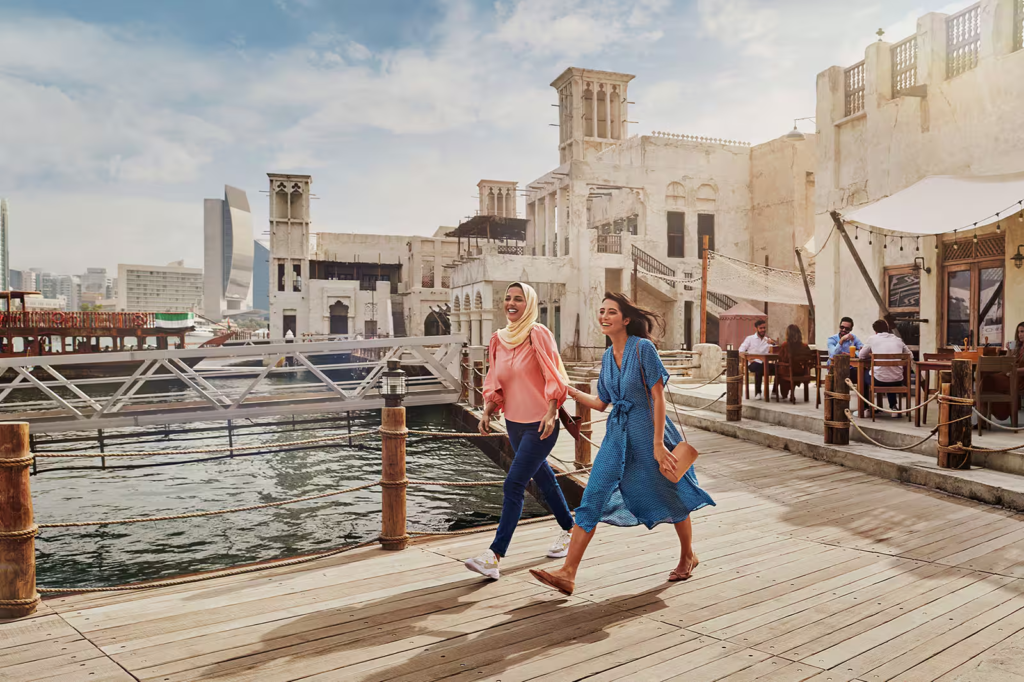Dubai’s vision of a true “20-Minute City” is moving beyond concept to concrete reality. The idea: live, work, and relax within a short, 20-minute journey to most of life’s essentials. This shift isn’t just lifestyle-flavour—it’s backed by big numbers and heavy investment from the Roads and Transport Authority (RTA).
A new pace of life, one journey at a time

The city has accelerated how people move. Thanks to its growing transit network, Dubai now records an average travel time of around 13.7 minutes per 10 km, meaning the commute burden is easing. (Previously higher.)
With major infrastructure like the Dubai Metro at its heart, the mobility shift is visible in neighbourhoods, offices and daily routines.
Infrastructure driving the “20-Minute City”
The strategic backbone is a mix of Metro expansion, road network upgrades and pedestrian/cycling infrastructure. One key component: the upcoming Dubai Metro Blue Line which is slated to connect metro stations with emerging districts and integrate buses, marine transport and other modes.
What this means in practice: around 80 % of essential services—schools, shopping, health, work—are targeted to be within a 20-minute journey for residents.
Saving time, fuel and adding value
This isn’t just about feeling better—it’s about measurable gains. Over past years:
- Time and fuel savings running into hundreds of billions in dirhams
- Direct revenues, GDP contributions and uplift in property values in well-connected areas
- Areas near transit corridors have seen value gains significantly above average
That means living near a Metro station or in a district designed for this kind of neighbourhood access isn’t just a convenience—it’s a smart long-term move.
Everyday impact: more local, less long haul
Here’s how this touches you day to day:
- You can hop out of your front door and reach your café or grocery store comfortably in 10-20 minutes.
- Instead of relying on a car for everything, you might switch to a quick Metro ride or a bike path.
- Your neighbourhood becomes more than just a place to sleep—it becomes a place to live, work and play.
- Because travel time drops, the “hidden cost” of commuting (lost hours, stress, vehicle fuel) starts shrinking.
What to watch as the plan unfolds
Even with strong momentum, a few factors will determine how seamless this becomes:
- Heat & comfort: Outdoor walking or cycling in Dubai’s climate presents challenges. Good design (shade, cooling, sheltered paths) will matter.
- Seamless transfers: It’s one thing to take the Metro, another to connect it easily to your bus, bike or taxi. Integration is key.
- Local amenities: The neighbourhood must already offer mixed-use features—shops, services, offices—not just transport links.
- Equity of access: Ensuring all residents—not only high-rise zones—benefit from 20-minute access will be critical.
Making it work for you
If you’re living in or moving to Dubai, here’s how you might benefit:
- Seek residences within easy reach of Metro or major bus/tram hubs.
- Explore neighbourhoods where walking/cycling is comfortable (good footpaths, greenery, local shops).
- Factor transport-time savings into your lifestyle: less wasted time means more for friends, hobbies or family.
- Watch property areas near new infrastructure: better connectivity often leads to value appreciation.
Dubai’s “20-Minute City” is not just a planning phrase—it’s affecting how the city flows, how its residents live and even how investments play out. With motors hum, trains gliding overhead and neighbourhoods evolving, the doors are opening on a version of urban life where time is less a burden and more a resource.
Read More:
- Dubai Ride 2025 Road Closures Hit Major Routes on Sunday – Social Kandura
- Emirates boarding pass becomes a VIP savings card across the UAE – Social Kandura
Follow Social Kandura for the latest local news and things to do in Dubai and across the UAE.










